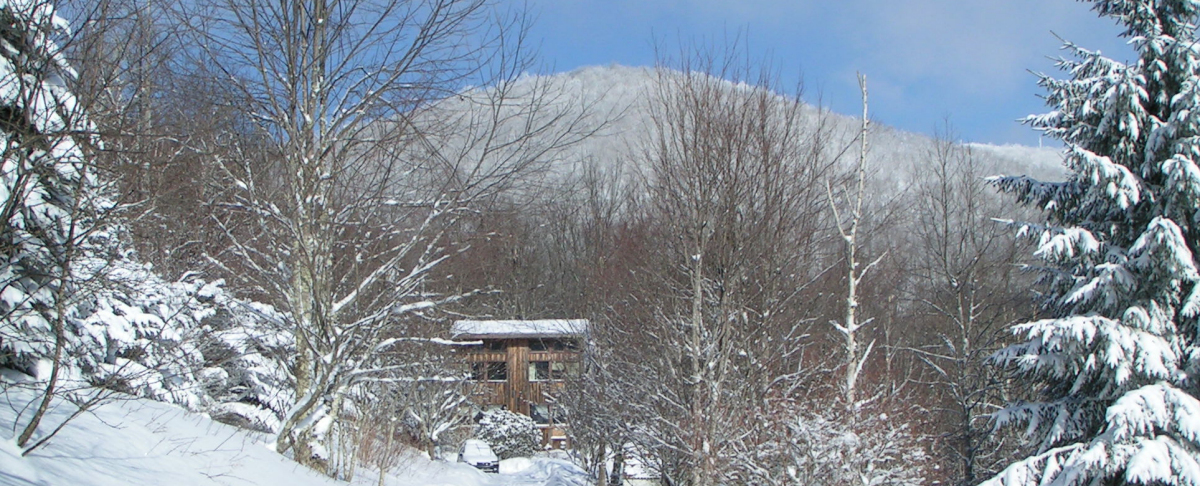Our quiet place here at the end of the road first greeted us with a meadow covered in a profusion of daisies, black-eyed Susans, Queen Anne’s Lace, and wild strawberries. But it had not always been that way. Not many years before we came here the land had been cleared and farmed. The son of a nearby neighbor whose family had once owned this land told us of helping his family clear the land and then grow cabbage, a common crop throughout the area even for some years after we arrived. The decaying remnants of split rail fences they had built bordered part of the property and locust posts remained where barbed wire fences had been placed. The woods still covering two-thirds of our homeplace even now contain stumps and moss-covered logs of the chestnut trees killed by blight in the early part of last century. Since chestnut trees made up an estimated one-fourth of all hardwood trees in the Appalachians before the blight, no doubt this mountainside was once covered with chestnuts.
The land continues to change. Obviously our presence here has had a large impact on the land closest around the house and garden, but that is a small part of our homeplace. The woods have retaken naturally part of the meadow that we were not using otherwise. An abandoned project of ours to raise Christmas trees in part of the meadow now gives us a sizable patch of 50-75 foot tall trees, mainly Norway Spruce, loved by deer and birds and who knows which of our other animal friends. Were we to stop maintaining the yard and garden areas, this would all quickly revert to woodland through the natural progression of an Appalachian hardwood forest.
We came here wanting to be in a place in the mountains, surrounded by nature, and we certainly are. To name a few of the things we have found here:
Trees: oaks, maples, cherries, black birches, hickories, elms, beeches, black locusts, tulip poplars, mountain magnolias (cucumber tree), ashes, hemlocks, cedars, white pines, sourwoods, serviceberries, hawthorns
Flowering plants: rhododendrons, flame azaleas, mountain laurels, dog hobbles, daisies, black-eyed Susans, Queen Anne’s Lace, wild strawberries, blueberries
Birds: chickadees, house finches, purple finches, tufted titmice, nuthatches, pileated woodpeckers, downy woodpeckers, hairy woodpeckers, red-bellied woodpeckers, eastern phoebes, evening grosbeaks, rose-breasted grosbeaks, bluejays, crows, barred owls, screech owls, barn owls, starlings, barn swallows, Carolina wrens, red-tailed hawks, sharp-shinned hawks
Mammals: red squirrels, grey squirrels, fox squirrels, flying squirrels, chipmunks, raccoons, skunks, possums, rabbits, grey foxes, red foxes, black bears, coyotes, mice, voles, bats
Reptiles: black snakes, corn snakes, garter snakes, ring-neck snakes
Amphibians: red-spotted newts, black salamanders, spade-foot toads, wood frogs, spring peepers
Grasses, “weeds”, and other small/low-growing plants: too numerous to begin listing
There are so many fascinating things to be observed even in this small patch of the world where we live. I get the feeling that many people never even see some of the most obvious things around them, too busy with the affairs of their everyday lives or perhaps thinking the natural world not important or not interesting enough to merit their attention. Many don’t know the names of the most common birds, trees, or flowers that surround them every day and are amazed when we recognize a wildflower from a distance or identify a bird by its flight pattern or call. So much is there to be seen by merely taking the time to notice. So much delight is there to be missed when we don’t pay attention to our natural surroundings.
